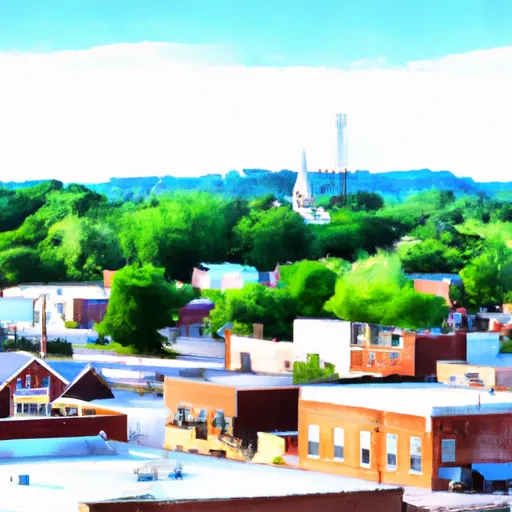°F
°F
mph
Windspeed
%
Humidity











Rogersville, Missouri is a charming town located in Webster County. With a population of approximately 4,500, it offers a welcoming small-town atmosphere to its residents and visitors.
The climate in Rogersville is classified as humid subtropical, characterized by hot summers and mild winters. Summers are typically hot and humid, with average temperatures ranging from the upper 80s to low 90s Fahrenheit. Winters are generally mild, with temperatures averaging in the 30s to 40s Fahrenheit. Precipitation is spread throughout the year, with the highest rainfall occurring during the spring and early summer months.
Hydrology constituents in Rogersville consist of several creeks and streams, with Finley Creek being the largest. These water bodies provide opportunities for fishing and boating, as well as scenic views for outdoor enthusiasts.
Outdoor recreation options in Rogersville are plentiful. The town is surrounded by beautiful natural landscapes and offers various parks and trails for hiking, biking, and picnicking. Nearby lakes and rivers provide opportunities for water sports such as kayaking, canoeing, and paddleboarding. Additionally, Rogersville is home to a golf course, providing options for golf enthusiasts.
Overall, Rogersville, Missouri offers a pleasant climate, diverse hydrology constituents, and numerous outdoor recreation opportunities, making it an appealing destination for nature lovers and adventure seekers.
Weather Forecast
Rogersville receives approximately 1134mm of rain per year, with humidity levels near 80% and air temperatures averaging around 13°C. Rogersville has a plant hardyness factor of 6, meaning plants and agriculture in this region thrive during a short period during spring and early summer. Most plants will die off during the colder winter months.
Regional Streamflow Levels
66
Cubic Feet Per Second
124
Cubic Feet Per Second
154
Cubic Feet Per Second
15
Cubic Feet Per Second
Nearby Camping
| Camping Area | Reservations | Toilets | Showers |
|---|---|---|---|
| Edgewood - De Gray Lake | |||
| Point Cedar - De Gray Lake | |||
| Caddo Drive - De Gray Lake | |||
| Arlie Moore - De Gray Lake | |||
| DeGray Lake State Park | |||
| White Oak Lake State Park |



